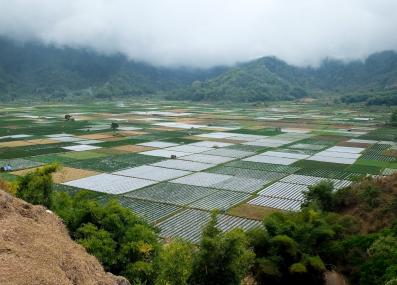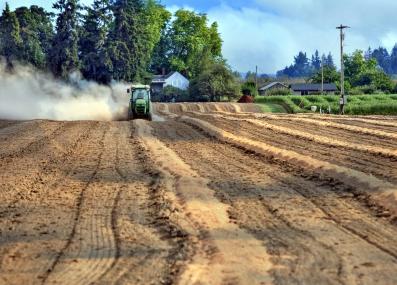Have a question?
Don't plants do better in environments with very high CO2?
Because plants use carbon dioxide to grow, it’s tempting to think they might prefer a planet with more atmospheric CO2 than is present today. That’s not necessarily so.
Updated January 8, 2024
It’s true that plants love CO2. During photosynthesis, they take in carbon dioxide and, with the assistance of water and sunlight, make energy for themselves while releasing oxygen for us to breathe. Plants have been around for billions of years and have lived on Earth at times when the planet had far more CO2 in the air than it does now. So, would plants prefer a more carbon-heavy planet, like the one humans are now creating with our greenhouse gas emissions?
Not necessarily, says David Des Marais, an MIT Professor of Civil and Environmental Engineering who studies how plants respond to their environments. “The short answer,” Des Marais says, “is that most plants will grow faster and bigger with extra atmospheric CO2—all else being equal.” However, plant growth is too complex for a one-size-fits-all law like “more CO2 is better.”
Experiments in which scientists piped extra CO2 into plant-growing chambers have proven this basic science: the additional carbon makes plants grow faster if you maintain other factors, such as soil nutrient and water availability.1 Yet things may not be so simple for the planet at large, Des Marais says. Additional experiments have tracked plants growing in free air carbon enrichment (FACE) sites, where the researchers added CO2 not to enclosed chambers but to open environments such as agricultural fields that more closely simulate reality. Although the added carbon sped up plant growth in these places, it did not accelerate nearly as quickly as for plants in closed, CO2-rich chambers.2
Although plants need carbon dioxide to grow, their success in very high-carbon environments is not guaranteed. Not all plants like extra carbon equally. And for those carbon aficionados in the plant kingdom, CO2 is not the only factor that controls growth. As any aspiring green thumb knows, plants need the right balance of water and soil nutrients to translate extra carbon dioxide into growth.
This is a problem, given the way our climate is trending. Climate change, driven by excessive CO2 in the atmosphere, deepens droughts in places like the American West. That reduces the water supply for plants there while simultaneously increasing the risk of catastrophic wildfires. In other places, plants will have to cope with more frequent disasters like flooding and heat stress, exposure to saltwater from rising seas, and an increase in pests that enjoy warmer winters.
And though planting millions of additional trees is one popular idea often floated for pulling some CO2 out of the atmosphere, it is not clear that the world would have enough nutrients in the soil to allow for such growth.
That’s bad news for plants, and for people hoping for some relief from climate change. So is the fact that the process of respiration, when plants release some of their stored CO2, happens faster under hotter conditions. “That's the real devil in a lot of these carbon sequestration conversations,” Des Marais says. “It's one thing to get the carbon out of the air and into the trees or soil, but it has to stay there. And if you increase temperature, you tend to increase respiration.”
Des Marais says some people point to climates of deep history as proof that plants can endure or even enjoy very high concentrations of carbon in the air. We know from the geologic record that hundreds of millions of years ago, Earth had an atmospheric CO2 level in excess of 2,000 parts per million (ppm). That’s compared to around 280 ppm in pre-industrial times and 417 ppm in 2022.3
Although plenty of plants lived through that period—albeit different species and in different places than today—humans did not. Such a CO2 level would produce year-round scorching temperatures akin to what we experience in summer today. In other words, he says, “this is not a period we would ever want to visit.”
Thank you to José Rodriguez of Cuernavaca, Morelos, Mexico, for the question. You can submit your own question to Ask MIT Climate here.
1 "Plant Growth at Elevated CO2," Hendrik Poorter and Marta Pérez-Soba. Encyclopedia of Global Environmental Change: Volume 2, The Earth system: biological and ecological dimensions of global environmental change. Editor-in-chief Ted Munn. 2002.
2 Long, Stephen, et al., "Food for Thought: Lower-Than-Expected Crop Yield Stimulation with Rising CO2 Concentrations." Science, Volume 312, Issue 5782, 2006, doi:10.1126/science.1114722.
3 National Oceanic and Atmospheric Administration: Climate Change: Atmospheric Carbon Dioxide. Updated May 12, 2023.








